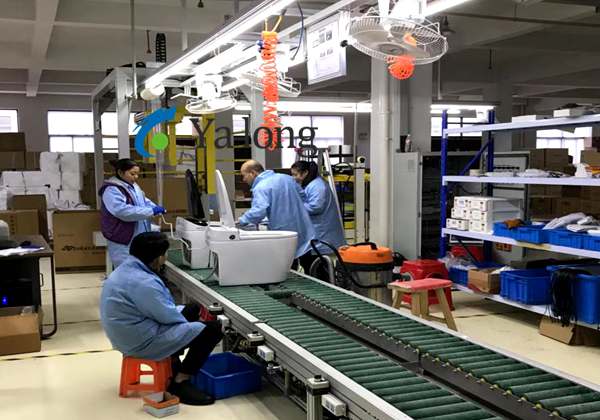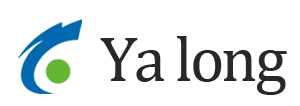I. Part pre-assembly stage:At the beginning of the smart toilet production line, the roller line conveys injection molded plastic parts such as toilet seats and covers to the pre-assembly station. After completing the snap installation of the basic components and sealing ring fitting, the operator places the pre-installed components on the double-speed chain tooling plate. The tooling plate enters the next stage with the double-speed chain. At this time, the roller line simultaneously transports the ceramic body from the storage area to the assembly main line, and lifts the ceramic body to the corresponding tooling plate manually or with a robotic arm to complete the preliminary positioning.
II. Core assembly stage:The double-speed chain conveys the tooling plate equipped with the ceramic body to the pipeline assembly station, where the tooling plate is fixed by a jacking rotating mechanism, and the operator uses auxiliary tools to complete the installation and sealing test of the inlet pipe and the discharge pipe. Then, the tooling board continues to flow to the circuit integration station, and the double-speed chain is suspended. After positioning, the automated equipment completes the docking and fixing of the control panel and sensor lines. The line interface achieves rapid installation through a snap-in design to improve assembly efficiency.After the circuit assembly is completed, the double-speed chain conveys the workpiece to the functional component installation area, and the roller line synchronously conveys the heating module, flushing device and other components to the side auxiliary station. After the operator picks up the parts through the material rack, the parts are completed on the tooling board. Mechanical fixation and connection, and smooth transportation of the double-speed chain ensures the accuracy of the parts during the installation process.
III. Inspection and final assembly stage:The semi-finished products that have undergone core assembly enter the testing station with the double-speed chain. After the tooling board is parked, the testing equipment automatically conducts preliminary tests on the tightness of the waterway and the continuity of the circuit. The unqualified products are diverted to the repair area through the side roller line. Qualified workpieces continue to flow to the appearance cleaning and accessory installation station. During the slow running of the double-speed chain, the operator cleans the surface of the product, and completes the finishing before final packaging through packaging boxes, instructions and other accessories transported by the roller line.
IV. Finally, the double-speed chain conveys the finished products to the off-line roller line, which smoothly conveys the finished products to the storage temporary storage area or the quality inspection and final inspection area, completing the closed production loop of the entire toilet assembly line.



